Osprey
Books Recommendation |
||
|
|
|
|
Osprey
Books Recommendation |
||
|
|
|
|
| Campaign Series | ||||
Frontpage |
Description/contents |
Author |
Publisher |
Buy from |
 |
Campaign
01
Normandy 1944 - Allied landings and breakout D-Day, 6 June 1944, saw the largest amphibious landing operation in history. From ports and harbors on the southern coast of England, an armada of troopships and landing craft launched the Allied return to mainland Europe. Stephen Badsey provides a concise account of the Normandy campaign, from the fiercely contested landings, to the struggle to capture Caen, the 'Cobra' offensive and the dramatic pursuit of the Germans to the River Seine. This was the crucial campaign of the Western theatre: after the Battle of Normandy the only question was how soon the war would end, not who would win it. |
Stephen Badsey |
 |
|
 |
Campaign
03
France 1940 The German victory of 1940 stunned the world. France, major European power and owner of the World's largest armies had fallen in less than seven weeks to the might of the German Wehrmacht. The secret of the Wehrmacht's success lay in its carefully thought out organization and the tactics of blitzkrieg. Fast moving tank divisions supported by Armoured, mobile infantry swept over opposition, helped by both conventional bombers and deadly Stuka dive-bombers. Alan Shepperd's highly detailed text examines the tactics, organization and equipment of the Allied and German forces, and provides a daily account of the most crucial period of the battle. |
Alan Shepperd |
Osprey | |
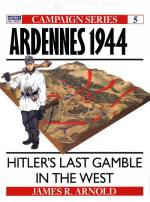 |
Campaign
05
Ardennes 1994 The 'Battle of the Bulge' was the last major German offensive in the West. Three armies attacked through the Ardennes, the weakest point in the American lines - and almost broke through. This title describes the planning of the attack and the course of events, including the Defence of Bastogne and the heroic delaying actions fought by GIs supposed to be in a 'quiet' sector of the front. In spite of serious American disadvantages Hitler's offensive was stopped. James Arnold explains exactly how this was achieved, and how Germany's last hopes of victory were finally put to rest. Campaigns 5, 24, 74 and 75 are also available in a single volume special edition as ‘Into the Reich’. |
James Armold |
Osprey | |
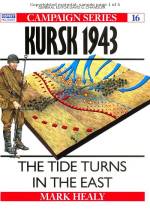 |
Campaign
16
Kursk 1943 - The TideTurns in the East In the summer of 1943 the German army stood poised for a major offensive. The attack was aimed at the Kursk salient, which the Germans intended to isolate, trapping large numbers of Russian troops and paving the way for the decisive campaign to knock the Soviet Union out of the war. By the time of the attack, the Russians had turned the salient into a mass of defensive positions. In the following decisive clash, the Soviets bled Germany's vital Panzer forces white and finally took the initiative. The counter-offensive which followed began an advance that would end in the ruins of Berlin. |
Mark Healy |
Osprey | |
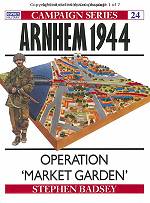 |
Campaign
24
Arnhem 1944 'Market Garden' was one of the most audacious, and ultimately controversial, operations of the Second World War - a joint penetration, by an armoured column and a large-scale airborne drop, to punch a decisive hole in the German defenses. If it had succeeded, the war could have ended in 1944. Yet the two-pronged attack failed in its objectives. This book details how, instead of being relieved after 48 hours as expected, British paratroopers were cut off for nine days. Facing two unexpected SS Panzer divisions the Allies were eventually evacuated across the Rhine after putting up an incredible fight: of the 10,000 men involved less than 2,000 survived. Campaigns 5, 24, 74 and 75 are also available in a single volume special edition as ‘Into the Reich’. |
Stephen Badsey |
Osprey | |
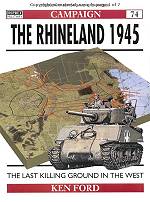 |
Campaign 74 The Rhineland 1945 Known as the last great 'stand-up fight' of the Second World War the battle for the Rhineland was brutal in the extreme. Eisenhower's 'broad front' policy called for the whole of the Rhineland to be taken before pushing his troops across the Rhine and into Germany itself. The Germans opened the Roer dams in a vain bid to temper this massive Allied offensive and this called for a drastic change in tactics. The ensuing battle was characterized by amphibious assaults on the fortified villages of the flooded Rhine lowlands, frontal assaults on the much vaunted Siegfried Line and the grim fighting for the Reichswald Forest. It was to be 'the last great killing ground in the west'. Campaigns 5, 24, 74 and 75 are also available in a single volume special edition as ‘Into the Reich’. |
Ken Ford | ||
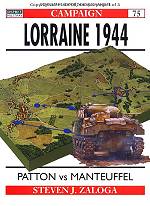 |
Campaign 75 Lorraine 1944 In the wake of the defeat in Normandy in the summer of 1944, Hitler planned to stymie the Allied advance by cutting off Patton's Third Army in the Lorraine with a great Panzer offensive. But Patton's aggressive tactics continued to thwart German plans and led to a series of violent armored battles. The battle-hardened Wehrmacht confronted the better-equipped and better-trained US Army. The Germans managed to re-establish a fragile defensive line but could not stop the US Army from establishing bridgeheads over the Moselle along Germany's western frontier. Campaigns 5, 24, 74 and 75 are also available in a single volume special edition as ‘Into the Reich’. |
Steven J.Zaloga |
||
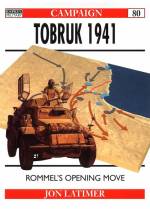 |
Campaign
80
Tobruk-1941 In March 1941, with Wavell's British troops having routed the Italians from Cyrenaica, General Erwin Rommel arrived in Tripoli to command the Deutsches Afrikakorps. Over the next two years the Afrikakorps and its commander would become legendary. In his first offensive, Rommel swept across the desert, driving the British back to the Egyptian frontier and capturing much of the 2nd Armoured Division in the process. One thorn remained in his side - the vital port of Tobruk continued to resist. If it could hold out Rommel's offensive might be halted. Wavell instructed General Morshead and his garrison of 30,000 determined Australians to hold at all cost. The scene was set for one of the epic struggles of the desert war. |
John Latimer |
||
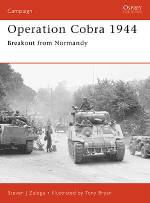 |
Campaign
88
Operation Cobra 1944 One of the most decisive months of World War II was the 30 days between 25 July and 25 August 1944. After the success of the D-Day landings, the Allied forces found themselves bogged down in a bloody stalemate in Normandy. On 25 July General Bradley launched Operation Cobra to break the deadlock. US forces punched a hole in the German frontline and began a spectacular advance. As Patton’s Third Army poured into Brittany and raced south to the Loire, the German army was threatened with encirclement. By the end of August German forces in Normandy were utterly destroyed, and the remaining German units in central and southern France were in headlong retreat to the German frontier. In this title Steve Zaloga explains how the breakout from Normandy came about. |
Steven J.Zaloga |
||
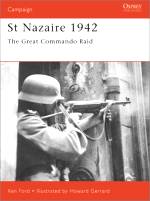 |
Campaign
92
St. Nazaire 1942 - The Great Commando Raid The raid on the port of St Nazaire in March 1942 by a sea-borne task force from British Combined Operations remains one of the most daring actions of World War II. The port lies at the mouth of the River Loire and in 1942, as well as a U-Boat base, contained the massive 'Normandie' dock, the only facility on the Atlantic coast large enough to accommodate the German pocket battleship Tirpitz. This book tells the story of the raid on St Nazaire that denied the use of the dock to the Tirpitz, the sister ship of the Bismarck, and constituted a crucial victory in the Battle of the Atlantic. |
Ken Ford |
||
 |
Campaign 105
D-Day 1944 (3) - Sword Beach & British Airborne Landings At 0016hrs on 6 June 1944 a Horsa glider ground to a halt a mere 60 yards from the Orne Canal bridge at Bénouville in Normandy. A small group of British paratroopers burst from it and stormed the bridge within minutes. The Allied liberation of Nazi-occupied Europe had begun. Within a few hours landing craft would swarm towards Ouistreham as British 3rd Division stormed ashore at Sword Beach. The battle would then begin to break through to relieve the paratroopers. In the third of the D-Day volumes Ken Ford details the assault by British 6th Airborne Division and the British landings on Sword Beach that secured the vital left flank of the invasion. |
Ken Ford | ||
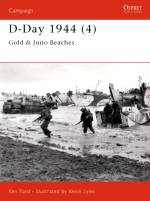 |
Campaign
112 D-Day 1944 (4) - Gold and Juno Beaches Operation Overlord, the Allied invasion of Normandy, was the greatest sea-borne military operation in history. At the heart of the invasion and key to its success were the landings of British 50th Division on Gold Beach and Canadian 3rd Division on Juno Beach. Not only did they provide the vital link between the landings of British 3rd Division on Sword Beach and the Americans to the west on Omaha, they would be crucial to the securing of the beachhead and the drive inland to Bayeux and Caen. In the fourth D-Day volume Ken Ford details the assault that began the liberation of Nazi-occupied Europe. |
Ken Ford | ||
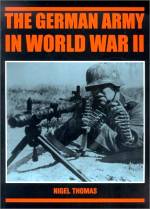 |
Special
Editions German Army in World War II This book combines Men-at-Arms 311: ‘The German Army 1939-45 (1) Blitzkrieg’, Men-at-Arms 316: ‘The German Army 1939-45 (2) North Africa, Men-at-Arms 326: ‘The German Army 1939-45 (3) Eastern Front 1941-43’, Men-at-Arms 330: ‘The German Army 1939-45 (4) The Eastern Front 1943-45 and Men-at-Arms 336: The German Army 1939-45 (5) Western Front, tracing the development of the German Army during World War II. On 1 September 1939, the date of Hitler's assault on Poland, his army numbered 3,180,000 - this figure would grow to 9,500,000, before dropping back to 7,800,000 by the time of the unconditional German surrender in May 1945. The range of specialist uniforms and equipment that were developed in response to the different demands of each theatre of war, from the days of Blitzkrieg advance to the final retreat, are all described and illustrated. Hitler's major campaigns in Western Europe, the Soviet Union, North Africa, and the Balkans are also summarised. |
Nigel Thomas | ||
 |
Campaign 107 Poland 1939 - The birth of Blitzkrieg The German invasion of Poland on 1 September 1939 began World War II in Europe, pitting the newly modernized army of Europe’s great industrial power against the much smaller Polish army and introducing the world to a new style of warfare – Blitzkrieg. Panzer divisions spearheaded the German assault with Stuka dive-bombers prowling ahead spreading terror and mayhem. This book demonstrates how the Polish army was not as backward as it is often portrayed and fielded a tank force larger than that of the contemporary US Army. Its stubborn Defence did give the Germans some surprises and German casualties were relatively heavy for such a short campaign. |
Steven J.Zaloga |
||
 |
Campaign
115
Battle of the Ardennes 1944 (1) St. Vith and the Northern Shoulder The Battle of the Bulge was the largest and most costly battle fought by the US Army in World War II. The Ardennes fighting was Hitler’s last gamble on the Western Front, crippling the Wehrmacht for the remainder of the war. In the first of two volumes on the Ardennes campaign Steven Zaloga details the fighting in the northern sector around St Vith and the Elsenborn Ridge. Sixth Panzer Army, containing the bulk of German Panzer strength, was expected to achieve the breakthrough here. It was the failure around St Vith that forced the Germans to look south towards Bastogne. |
Steven J.Zaloga |
||
 |
Campaign
118
The Yom Kippur War 1973 (1) The Golan Heights At 1345hrs on 6 October 1973, Israeli spotters in the observation post atop Mount Hermon saw Syrian gunners below them removing the camouflage nets from their guns. Ten minutes later shells began to rain down on Israeli positions all along the Golan Heights – The Yom Kippur War had begun. The shock Syrian attack caught the Israelis by surprise and by the afternoon of 7 October a Syrian brigade was less than 10km from the Sea of Galilee. Simon Dunstan describes in detail how amid desperate and bitter fighting the Israeli forces managed to turn the tide on the Golan Heights. |
Simon Dunstan |
||
 |
Campaign
126
The Yom Kippur War 1973 (2) The Sinai Israel’s victory in the 1967 ‘Six Day War’ sowed the seeds of the 1973 Yom Kippur War. At 1400hrs on 6 October 1973 the Egyptian army launched an assault crossing of the Suez Canal. The carefully co-ordinated attack achieved complete tactical surprise. The sand embankments of the Israeli Bar-Lev Line were breached and an Israeli counterattack thrown back with heavy losses. In the second of his two-volume analysis of the Yom Kippur War, Simon Dunstan details the fighting in the Sinai, culminating in Operation Gazelle, the Israeli counterattack across the Suez Canal. Although defeated militarily Egypt did ultimately succeed in forcing the Israelis back to the negotiating table. |
Simon Dunstan |
||
 |
Campaign
129
Operation Barbarossa 1941 (1) Army Group South Operation Barbarossa, Germany’s surprise assault on the Soviet Union in June 1941, aimed at nothing less than the complete destruction of Communist Russia. This book focuses on Field Marshal von Rundstedt and Army Group South, tasked with the capture of the Ukraine and Crimea. Von Rundstedt’s 46 divisions and single Panzer Group faced fierce resistance from the best equipped, trained and commanded units in the Red Army, but ultimately succeeded in destroying the Soviet 6th and 12th Armies at Uman before inflicting a further 600,000 casualties at Kiev. Here, von Rundstedt’s five-month advance to Rostov is examined in detail. |
Robert Kirchubel |
||
 |
Campaign
139
Guam 1941 & 1944 Loss and Reconquest The island of Guam was the first Allied territory lost to the Japanese onslaught in 1941. On 10 December 5,000 Japanese troops landed on Guam, defended by less than 500 US and Guamanian troops, the outcome was beyond doubt. On 21 July 1944 America returned. In a risky operation, the two US landing forces came ashore seven miles apart and it was a week before the beachheads linked up. Only the battles for Iwo Jima and Okinawa would cost the Americans more men than the landings on Guam and Saipan, which immediately preceded the Guam operation. In this book Gordon Rottman details the bitter 26-day struggle for this key Pacific island. |
Gordon Rottman |
||
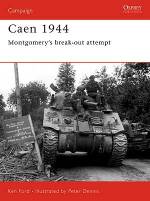 |
Campaign
143
Caen 1944 Montgomery's break-out attempt One of the key objectives of British forces on D-Day was the capture of the strategically vital city of Caen. General Montgomery saw Caen as the key to Normandy and the springboard for the Allied breakout, but so did the Germans and the city did not fall. It took three major offensives and more than 30 bloody days of struggle to finally take Caen. In the process the city was controversially devastated and its civilian population decimated. The Allies paid a high price for Caen but the horrific German casualties bled their forces in Normandy white and helped open the way for the American breakout in Operation Cobra. |
Ken Ford |
||
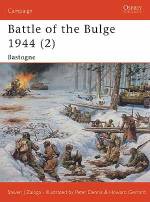 |
Campaign
145
Battle of the Bulge 1944 (2) Bastogne The Ardennes offensive in December 1944, known to history as the “Battle of the Bulge”, was the decisive campaign of the war in North-West Europe. When the attack in the north by 6th Panzer Army failed, Hitler switched the focus of the offensive to General Manteuffel’s 5th Panzer Army farther south. Overwhelming the green US 106th Division, German Panzers flooded towards the River Meuse. Barring their way was the crossroads town of Bastogne, reinforced at the last minute by the paratroopers of the 101st Airborne, the ‘Screaming Eagles”. The stage was set for one of the epic struggles of the war – the battle for Bastogne. |
Steven Zaloga |
||
 |
Campaign
146
The Marshall Islands 1944 Operation Flintlock, the capture of Kwajalein & Eniwetok Following the capture of Tarawa in November 1943, American eyes turned to the Marshall Islands. These were the next vital stepping-stone across the Pacific towards Japan, and would bring the islands of Guam and Saipan within the reach of US forces. In their first amphibious attack, the new 4th Marine Division landed on Roi and Namur islands on 1 February 1944, while US 7th Division landed on Kwajalein. At the time this was the longest shore-to-shore amphibious assault in history. The lessons of the bloody fighting on Tarawa had been well learned and the successful attack on the Marshalls set the pattern for future amphibious operations in the Pacific War. |
Gordon Rottman |
||
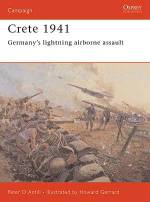 |
Campaign
147
Crete 1941 Germany's lightning airborne assault Operation Mercury, the German airborne assault on the island of Crete in May 1941, was the first strategic use of airborne forces in history. The assault began on 20 May, with landings near the island’s key airports, and reinforcements the next day allowed the German forces to capture one end of the runway at Maleme. By 24 May, the Germans were being reinforced by air on a huge scale and on 1 June Crete surrendered. This book describes how desperately close the battle had been and explains how German losses so shocked the Führer that he never again authorised a major airborne operation. |
Peter Antill |
||
 |
Campaign
148
Operation Barbarossa 1941 (2) Army Group North Of the German Army Groups that attacked Soviet Russia, Von Leeb's Army Group North, tasked with seizing the Baltic States and Leningrad, was the smallest and weakest. General Kuznetzov's Northwestern Front, however, was in an even weaker state. Despite brave counterattacks and defense by the Soviet forces, the Germans smashed through the Dvina Line, then the Stalin Line, flooded into Latvia and pressed on to encircle Leningrad. This book examines the German offensive and also the courageous Soviet attempts to halt the German spearhead, defending every possible line against overwhelming odds. |
Robert Kirchubel |
||
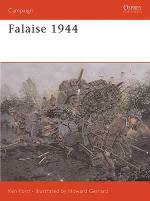 |
Campaign
149
Falaise 1944 Death of an army The battle around Falaise in Normandy during August 1944 saw the destruction of the German Seventh army. This book details the chain of events which led to the German retreat and the ensuing liberation of France. The British and American breakout battles had released motorised units to wage a more mobile war against the German static defensive tactics. At Falaise, the armored units of US Third Army encircled the German Seventh Army, squeezed them into an ever-smaller cauldron of chaos and crushed them against the advancing British Second Army. The results were devastating: those troops able to escape the disaster fled, those who remained were killed or captured and vast quantities of armor and equipment were lost. |
Ken Ford |
||
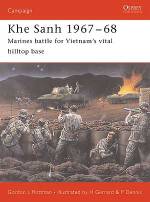 |
Campaign 150
Khe Sanh 1967-68 Marines battle for Vietnam's vital hilltop base Khe Sanh was a small village in northwest South Vietnam that sat astride key North Vietnamese infiltration routes. In September 1966 a Marine battalion deployed into the area. Action gradually increased as the NVA attempted to destroy Free World Forces bases, and the siege of Khe Sanh proper began in October 1967. The bitter fight lasted into July 1968 when, with the changing strategic and tactical situation, the base was finally closed. This book details the siege and explains how, although the NVA successfully overran a Special Forces camp nearby, it was unable to drive US forces from Khe Sanh. |
Gordon Rottman |
||
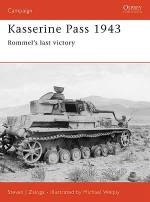 |
Campaign
152
Kasserine Pass 1943 Rommel's last victory The North African campaign of November 1942-May 1943 was a baptism of fire for the US Army. After relatively straightforward landings, the US II Corps advanced into Tunisia to support operations by the British 8th Army. Rommel, worried by the prospect of an attack into his rear, decided to exploit the inexperience of the US Army and strike a sudden blow against their overextended positions around the Kasserine Pass. However, the Germans were unable to exploit their initial success, and later attacks such as at El Guettar were bloodily repulsed. The fighting in Tunisia taught the green US Army vital combat lessons, and brought to the fore senior commanders such as Eisenhower, Patton, and Bradley. |
Steven Zaloga |
||
 |
Campaign 155
Anzio 1944 US VI Corps' beachhead battle In January 1944, the Allies decided to land at Anzio in order to overcome the stalemate at Cassino.This amphibious landing has become one of the most controversial campaigns of World War II. Questionable decisions by the Allied leadership led to three months of World War I-style trench warfare, and the entire beachhead suffered from continuous German observation and bombardment. Vividly describing each thrust and counter-thrust, this book takes us through the agonizing struggle as each side sought to retain or regain mastery. It shows how Anzio proved to be a stepping stone not only to Rome but also to the liberation of Italy. |
Steven Zaloga |
||
 |
Campaign 158
El Alamein 1942 The turning of the tide The battle of El Alamein marked the turning point in Britain's fortunes in the Second World War. There were three separate battles between July and November 1942, all of which were fought to halt the advance of Rommel's army towards the Suez Canal. This final battle at El Alamein, fought in October and November, saw the continuous bombardment of the German line that Rommel was instructed to hold at all costs by Hitler himself. The Allies shattered the German defences, and Rommel led a westward retreat in order to salvage what was left of the Afrika Korps. This book provides an in-depth analysis of the battle that turned the tide in favour of the Allies in Africa. |
Ken Ford |
||
 |
Campaign
159
Berlin 1945 End of the Thousand Year Reich Hitler's Third Reich was on the brink of total ruin in mid-April 1945, and the Red Army was poised less than 60 miles to the east and ready to seize the German capital. Peter Antill describes the events in this engaging history, examining the Soviets' march towards Berlin and the Germans' final resistance. This book, supplemented with a host of maps and illustrations, provides a vivid portrayal of the death throes of the Third Reich and the end of the war in Europe, exploring the strategy of both sides and the tactics of impromptu urban warfare. |
Peter Antill |
||